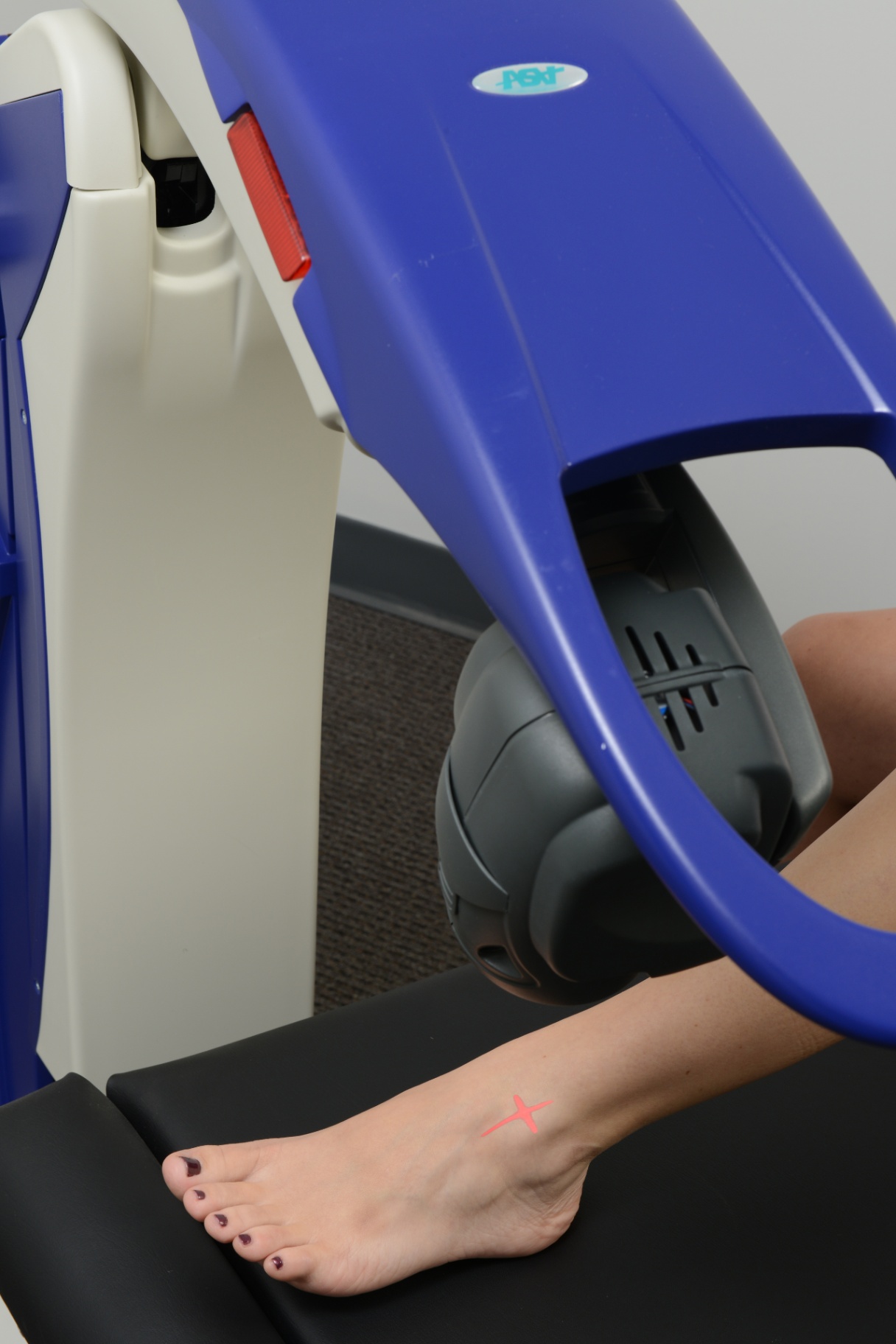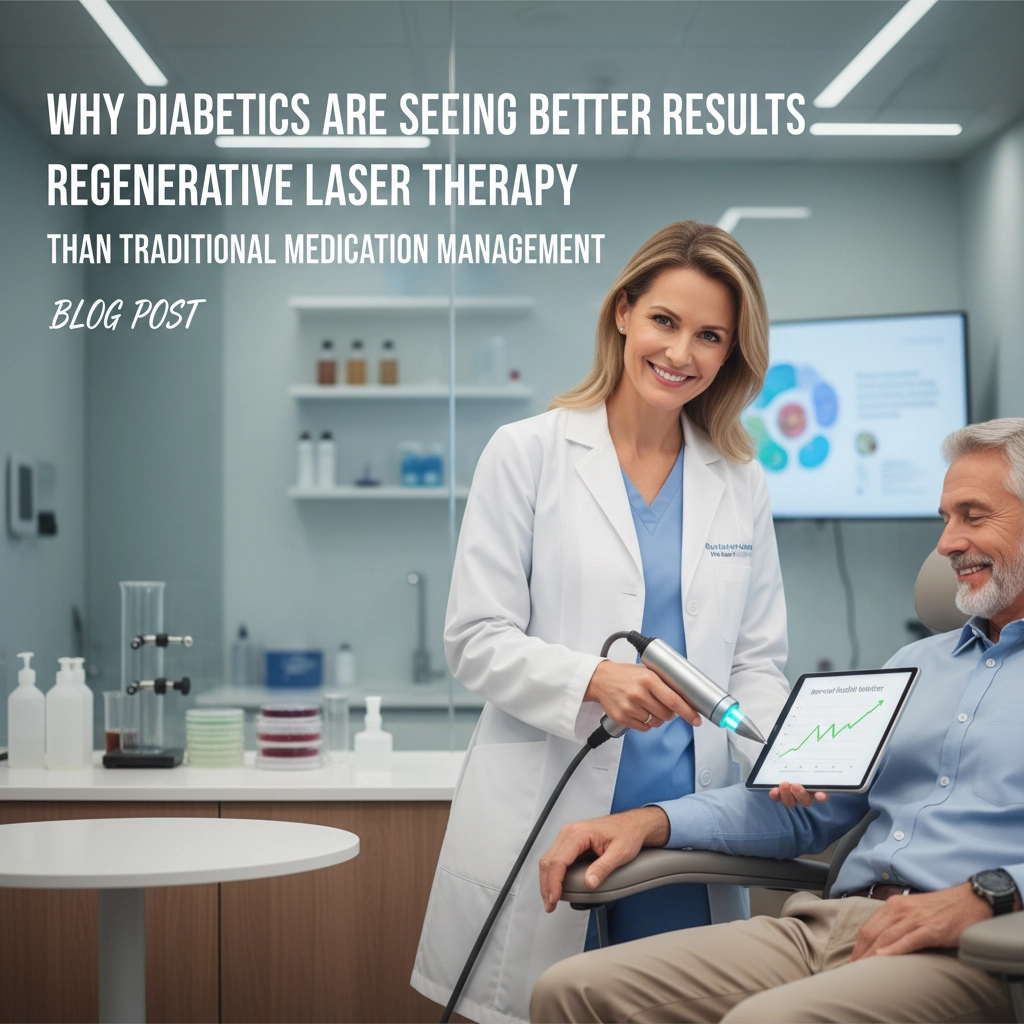Dr Mark Dailey
Blog for Your Health
Why Diabetics Are Seeing Better Results with Regenerative Laser Therapy Than Traditional Medication Management
Are you living with the burning, tingling, and numbness that comes with diabetic neuropathy? Does it feel like your own body is working against you, making even simple tasks like walking or sleeping nearly impossible? If you're tired of taking medication after medication that only masks your pain without actually healing the underlying damage, you're not alone.
Here's what most doctors won't tell you: traditional medication management for diabetic neuropathy is fundamentally flawed. While pills can temporarily dull your pain, they're doing absolutely nothing to repair the nerve damage that's causing your suffering in the first place.
That's exactly why more diabetics are turning to regenerative laser therapy: and seeing results that frankly shocked both them and their healthcare providers.
The Fatal Flaw in Traditional Diabetic Neuropathy Treatment
Let's be honest about what your current medications are actually doing. Those gabapentin, pregabalin, or other nerve pain medications? They're essentially putting a band-aid on a broken bone. They might help you get through the day, but they're not addressing the root cause of your neuropathy.
Traditional medication management operates on a simple principle: block the pain signals from reaching your brain. While this might provide temporary relief, it comes with a laundry list of side effects: nausea, drowsiness, dizziness, weight gain, and brain fog that can make you feel like you're living in a haze.
But here's the real problem: your nerve damage is getting worse every single day while you're just masking the symptoms. Those medications aren't stimulating nerve regeneration, improving blood flow, or addressing the cellular dysfunction that's destroying your peripheral nerves.
How Regenerative Laser Therapy Actually Heals at the Cellular Level

Now, let me explain what's happening inside your body when you receive cutting-edge MLS Robotic Laser Therapy. This isn't just another treatment: it's a complete paradigm shift in how we approach diabetic neuropathy.
The MLS (Multiwave Locked System) Robotic Laser uses dual infrared wavelengths: 808 nm and 905 nm: that penetrate deep into your tissues and trigger something called photobiomodulation. Think of it like this: if your damaged nerve cells were like a car with a dead battery, laser therapy is like giving them a jump start that gets their cellular engines running again.
Here's what's actually happening at the microscopic level:
ATP Production Skyrockets: The laser energy supercharges your cellular powerhouses (mitochondria) to produce adenosine triphosphate (ATP): the fuel your cells need to repair themselves. Damaged nerve cells that have been struggling to function suddenly have the energy they need to start healing.
Blood Flow Restoration: The laser promotes angiogenesis: the formation of new blood vessels: while dilating existing ones. For diabetics, this is crucial because poor circulation is one of the primary drivers of neuropathy. More blood flow means more oxygen and nutrients reaching your damaged nerves.
Nerve Regeneration: Unlike medications that just block pain signals, laser therapy actually stimulates the regeneration of damaged nerve fibers. The photochemical reactions trigger the release of growth factors that encourage nerve cells to repair themselves and form new connections.
Inflammation Reduction: The laser reduces pro-inflammatory cytokines while increasing anti-inflammatory factors, creating the optimal healing environment for your peripheral nerves.
Why Diabetics Respond So Dramatically to Laser Therapy

Diabetics are seeing superior results with regenerative laser therapy for several specific reasons that traditional medicine completely ignores:
Targeted Cellular Repair: High blood sugar levels damage the cellular machinery that keeps your nerves healthy. Laser therapy directly addresses this damage by energizing your cells' repair mechanisms. It's like giving your nerves the tools they need to fix themselves from the inside out.
No Drug Interactions: If you're diabetic, you're probably already taking multiple medications. Adding more drugs to the mix increases your risk of dangerous interactions and side effects. Laser therapy works independently of your other treatments, so there's no concern about drug interactions.
Addresses Root Cause: While medications treat symptoms, laser therapy tackles the fundamental cellular dysfunction that causes diabetic neuropathy. It's the difference between constantly bailing water out of a sinking boat versus actually fixing the hole.
Cumulative Healing: Each laser session builds on the previous one. Your nerve function improves progressively as more damaged cells are restored to normal function. Many of our patients report improvements that continue even after their treatment series is complete.
The Science Behind MLS Robotic Laser Technology
The MLS Robotic Laser represents the pinnacle of photobiomodulation technology. This FDA-approved Class IV laser system delivers precise wavelengths with robotic accuracy, ensuring that every damaged cell receives optimal therapeutic energy.
The dual-wavelength approach is crucial. The 808 nm wavelength penetrates deeper tissues and promotes circulation, while the 905 nm wavelength targets cellular repair mechanisms more superficially. When these wavelengths are delivered simultaneously in a synchronized pattern, they create a synergistic effect that's far more powerful than traditional single-wavelength lasers.
The robotic delivery system ensures consistent, precise treatment every time. Unlike handheld devices that depend on the operator's technique, the MLS Robotic Laser follows pre-programmed protocols that deliver exactly the right amount of energy to each treatment area.
Real Patient Outcomes at Oneonta Neuropathy Center

The results we're seeing with diabetic patients are honestly remarkable. Patients who've suffered with burning, stabbing pain for years are experiencing significant relief: often within just a few treatments.
We've had patients reduce their pain medication by 50-75% while experiencing better pain relief than they ever had with drugs alone. Many report being able to sleep through the night for the first time in years, walking longer distances without pain, and regaining sensation in areas where they'd been completely numb.
One 67-year-old diabetic patient came to us after struggling with severe neuropathy for over a decade. She couldn't walk more than a few steps without excruciating burning pain in her feet. After completing her MLS Robotic Laser series, she was able to walk her dog around the block: something she hadn't done in eight years.
Another patient, a 55-year-old construction worker with type 2 diabetes, was facing early retirement because his neuropathy made it impossible to work. The constant burning and numbness in his feet and legs was unbearable. After laser therapy, he returned to full-time work and has maintained his improvement for over two years.
Why Traditional Medicine is Falling Behind
The medical establishment is slowly catching up, but many doctors are still stuck in the old paradigm of symptom management rather than cellular healing. They're trained to prescribe medications, not to understand the emerging science of photobiomodulation and regenerative medicine.
That's why it's up to you to seek out advanced treatment options. The research is clear: regenerative laser therapy offers diabetics a path to actual healing, not just symptom management.
The safety profile is exceptional: no systemic side effects, no drug interactions, no risk of dependency. The treatment is painless, requires no preparation, and sessions typically last just 10-15 minutes.
Your Next Steps Toward Healing
If you're tired of living with the constant pain, burning, and numbness of diabetic neuropathy: and you're ready to try a treatment that actually heals rather than just masks your symptoms: it's time to explore MLS Robotic Laser Therapy.
Don't let another day pass while your nerve damage potentially gets worse. The science is clear, the technology is proven, and the results speak for themselves.
Ready to discover if regenerative laser therapy can help you reclaim your life from diabetic neuropathy?
Call us today at (205) 625-3488 to schedule your consultation and learn more about how MLS Robotic Laser Therapy might be the answer you've been searching for.
After hours? Call (205) 346-4726 and leave a message: we'll get back to you as soon as possible.
Your nerves have the ability to heal. Let us show you how.

